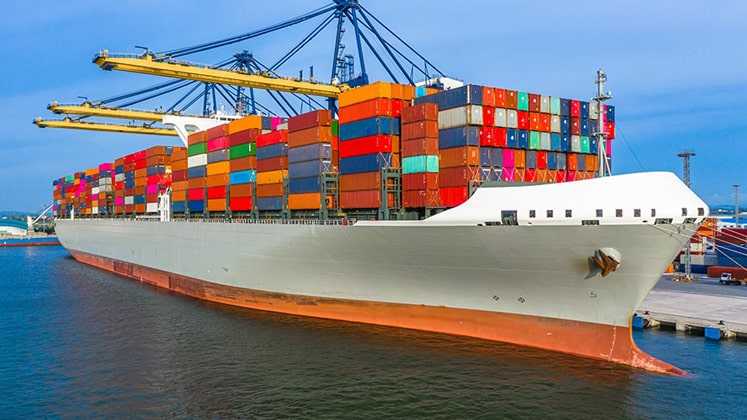
The receipts from Bangladesh’s overall merchandise export declined 7.3 per cent year-on-year to US $ 2.91 billion in September this year and this was the second consecutive month the export earnings marked a decline. According to data from the Export Promotion Bureau (EPB), September’s earnings were also 7.78 per cent lower than the month’s target of US $ 3.16 billion.
Notably, in September last year, Bangladesh exported merchandise worth US $ 3.14 billion.
Even as the country’s overall apparel exports took a hit in August and September, the silver lining is the Asian market, which is emerging as a major export destination to look forward to in the future. Bangladesh’s exports to the Asian markets registered nearly 93 per cent growth in 7 years, which as per experts is mainly due to competitive prices, Government’s export handouts and market diversification drives of exporters.
As per data of EPB, receipts from merchandise export to Asian countries increased by 20.52 per cent to US $ 4.95 billion in the last fiscal year. Bangladesh’s exports to India stood at US $ 1.25 billion in last fiscal year, up by 42.91 per cent, which was US $ 873.27 million in the previous fiscal while the country’s exports to Japan rose by 20.66 per cent to US $ 1.36 billion, exports to China by 19.60 per cent to US $ 831.20 million and to Korea by 45.44 per cent to US $ 370.65 million.
The country’s export earnings from Asian nations stood at US $ 4.96 billion in FY19, which is 12.23 per cent of the total exports. In the FY18, exports to Asian countries were worth US $ 4.11 billion or 10.14 per cent of total exports.
Compared with the earnings in 2011-12 FY – US $ 2.57 billion – the improvement is substantial.
So what is the significance of Asia for Bangladesh going forward?
As per World Bank data, South Asia holds on to its top spot as the world’s fastest growing region, with growth set to step up to 7 per cent in 2019, 7.1 per cent in 2020 and 2021. What’s more, 60 per cent or 4.5 billion of the total population live in Asia, of which China and India combine to 2.7 billion people, together accounting for 36 per cent of the total global population (as per World Economic Forum).
“Since in Asia reside 60 per cent of world total population, there is a huge scope for Bangladesh to grow in the export market especially through apparel and clothing goods exports,” former advisor to caretaker Government AB Mirza Azizul Islam underlined, adding, China, which alone holds 18 per cent of world population, and India are major export destinations for Bangladesh, while Japan is another potential market as it has more disposable income.
Garment makers too think no differently!
“China and India import lion’s share of Bangladeshi goods as here we enjoy duty-free market access. The Government also gives 4 per cent cash incentives for exports to non-traditional market,” maintained former BGMEA Senior Vice-President Faruque Hassan, adding, “Moreover there is a strong drive on the part of the Government and manufacturers to attract more buyers from the region.”
As a result, Bangladesh’s export earnings from Asian markets are increasing gradually in the region, felt Hassan.
But to sustain this growth, economists are for continuance of cash incentives. “Cash incentive for non-traditional export markets has had positive impact on exports and it needs to be continued for further growth in the regional market,” observed Executive Director of Policy Research Institute (PRI) Ahsan H. Mansur.
Notwithstanding the opportunities, there are a few odd hurdles as well, felt some.
“Compared to western region, regional trade barriers are much higher in Asian countries mostly in South Asia,” added former World Bank Dhaka office Lead Economist Zahid Hossain, who went on to maintain that customs regulation was not harmonised in the region and tariff and non-tariff barriers between trade partners were very high.
To increase exports to Asian nations, Bangladesh has to remove the barriers to diversifying products and move to bilateral trade agreement and regional partnership, Zahid suggested, adding on the whole, there must be political willingness in doing business and integration of regional trade.
First Vice President of BKMEA Mohammad Hatem emphasised on improving communication and connectivity with the region alongside liberalisation of trade policy to reap the benefits going forward.

Post a Comment